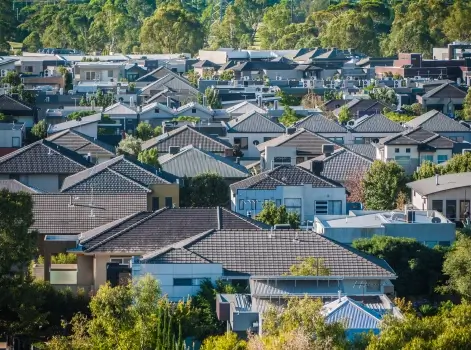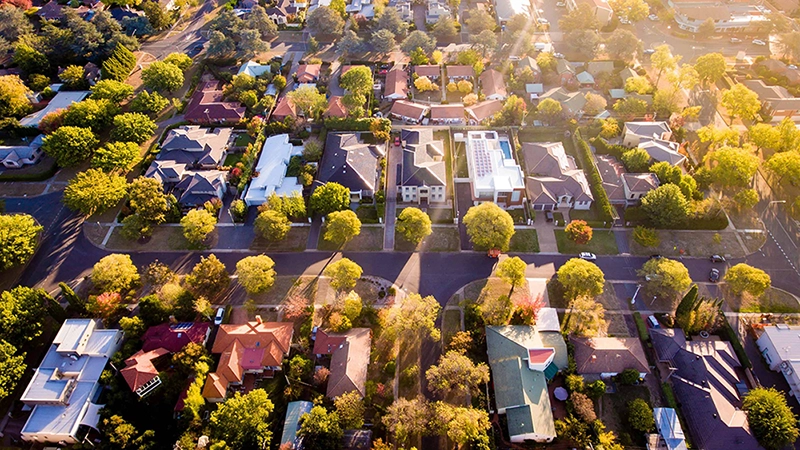Updated: 07 May, 2025
Australian home values edged higher in April, continuing the recovery trend that began in February. CoreLogic’s Home Value Index rose 0.3% nationally, pushing dwelling prices to a record high. The pace of growth slowed compared to March, however, weighed down by weaker sentiment and political uncertainty in the lead-up to the federal election.
Despite the subdued conditions, every capital city recorded a monthly increase in dwelling values, and regional markets continued to outperform capital cities in growth rates. The housing sector remains underpinned by low supply, persistent demand, and expectations of further interest rate cuts.
Read the full report here.
State Performance Overview
| State/City | HVI Change (%) | Description |
|---|---|---|
| Sydney | +0.2% | Sydney values rose modestly. Houses outperformed units with a 1.4% quarterly increase vs. -0.3% for units. |
| Melbourne | +0.2% | Modest growth with a balanced performance between houses and units was seen. |
| Brisbane | +0.4% | Brisbane continues its strong run, recording 7.8% annual growth. Houses led the charge with 0.9% growth over the quarter. |
| Adelaide | +0.3% | Adelaide remains a top performer with 9.8% annual growth, supported by consistent house price increases. |
| Perth | +0.4% | Still the strongest performer annually at 10%, Perth benefits from solid demand and limited stock, though growth has moderated. |
| Hobart | +0.9% | Hobart saw an improvement in April. House values rose 1.1%, while units were flat. |
| Darwin | +1.1% | Darwin led the capitals in monthly growth, driven by renewed interest in affordable housing and rising rents. |
| Canberra | +0.4% | Canberra values show marginal recovery. Units underperformed with a 1.2% annual decline. |
Regional Markets vs. Capital Cities
Regional housing values increased 0.6% in April, three times the growth rate of the combined capital cities (+0.2%). Regional areas have consistently outperformed metropolitan markets since October 2024.
Noteworthy regional performances:
- Regional WA: +1.3% (Monthly), +13.2% (Annual)
- Regional SA: +1.5% (Monthly), +12.9% (Annual)
- Regional QLD: +0.7% (Monthly), +8.7% (Annual)
These gains are largely driven by strong demand for affordable housing, lifestyle-driven relocations, and chronic undersupply in fast-growing areas like Townsville, Bunbury, and Murray & Mallee. This trend echoes the COVID-era boom in regional migration and appears to be strengthening again as affordability challenges in capital cities grow.
Rental Market Overview
Rental conditions are stabilising nationally. Rents rose 0.4% in April on a seasonally adjusted basis, while annual growth slowed to 3.6%, less than half the rate recorded a year ago (8.3%).
Despite the cooling pace, yields have improved:
- National gross rental yield: 3.73% (highest in two years)
- Capital city average: 3.52%
- Regional Australia: 4.41%
Perth still leads in annual rental growth (5.7%), although it’s down sharply from last year. Sydney and Melbourne recorded the lowest annual rent growth, at 1.9% and 2.0% respectively. Darwin and Hobart showed re-acceleration in rental appreciation, indicating improved demand.
Market Activity And Selling Conditions
Political uncertainty and a cluster of public holidays subdued market activity. Auction volumes fell to their lowest Easter-week level since 2019 (excluding COVID), and new listings dropped to 19,650 across the combined capitals, also the lowest for this time of year since 2019.
“The rate cut in February supported an upwards inflection in housing market conditions, but the positive influence from lower rates seems to be losing some potency. At the same time, household confidence slipped in April, with the US’s ‘Liberation Day’ tariff announcements and the upcoming federal election causing uncertainty. This may be causing some buyers and sellers to delay their decisions,” said Tim Lawless, Cotality’s research director.
Despite weaker activity, housing values held steady or improved, reflecting underlying demand and ongoing supply constraints.
Market Forecast
The outlook remains cautiously optimistic. While affordability pressures and sentiment dips continue to cloud buyer confidence, several tailwinds are expected to support growth in coming months:
- Rate Cuts: With the cash rate cut in February and another expected in May, borrowing capacity will probably improve.
- Election Clarity: Post-election policy certainty may boost consumer confidence.
- Stimulus For FHBs: Proposals include super access for deposits, 5% deposit guarantees, and mortgage deductibility, which would all probably increase first-home buyer activity.
- Persistent Undersupply: New dwelling commencements remain 16.5% below the decade average, sustaining upward price pressure.









